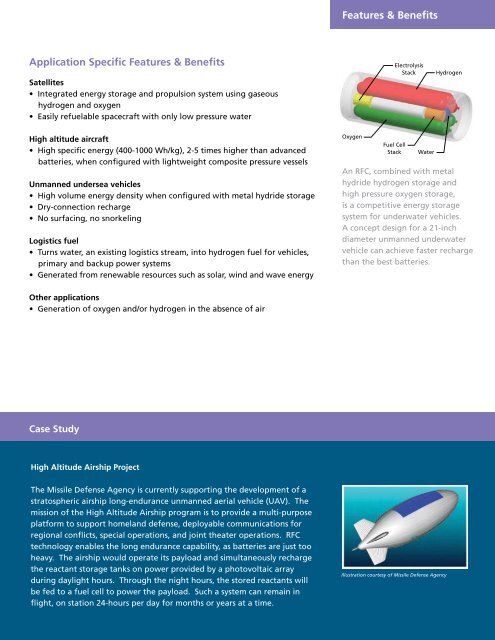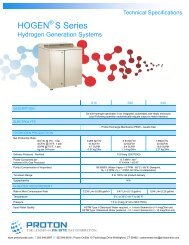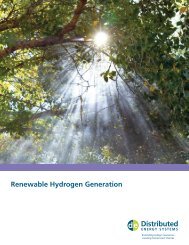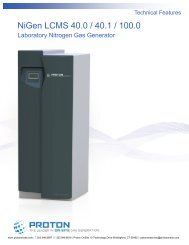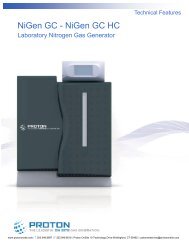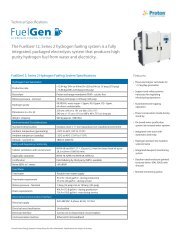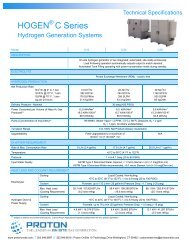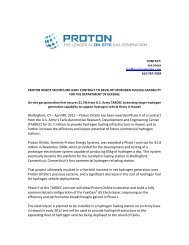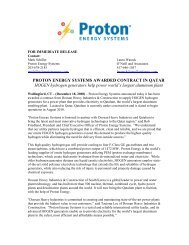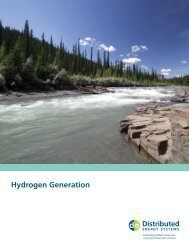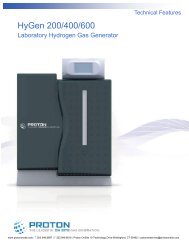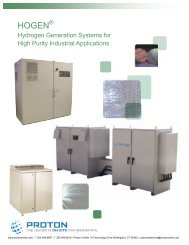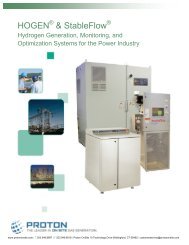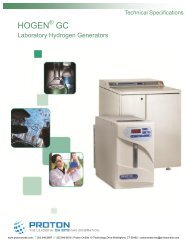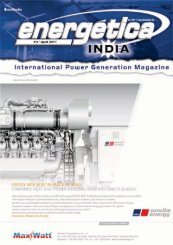Military & Aerospace - Proton OnSite
Military & Aerospace - Proton OnSite
Military & Aerospace - Proton OnSite
You also want an ePaper? Increase the reach of your titles
YUMPU automatically turns print PDFs into web optimized ePapers that Google loves.
Features & Benefits<br />
Application Specific Features & Benefits<br />
Satellites<br />
• Integrated energy storage and propulsion system using gaseous<br />
hydrogen and oxygen<br />
• Easily refuelable spacecraft with only low pressure water<br />
Electrolysis<br />
Stack<br />
Hydrogen<br />
High altitude aircraft<br />
• High specific energy (400-1000 Wh/kg), 2-5 times higher than advanced<br />
batteries, when configured with lightweight composite pressure vessels<br />
Unmanned undersea vehicles<br />
• High volume energy density when configured with metal hydride storage<br />
• Dry-connection recharge<br />
• No surfacing, no snorkeling<br />
Logistics fuel<br />
• Turns water, an existing logistics stream, into hydrogen fuel for vehicles,<br />
primary and backup power systems<br />
• Generated from renewable resources such as solar, wind and wave energy<br />
Oxygen<br />
Fuel Cell<br />
Stack<br />
Water<br />
An RFC, combined with metal<br />
hydride hydrogen storage and<br />
high pressure oxygen storage,<br />
is a competitive energy storage<br />
system for underwater vehicles.<br />
A concept design for a 21-inch<br />
diameter unmanned underwater<br />
vehicle can achieve faster recharge<br />
than the best batteries.<br />
Other applications<br />
• Generation of oxygen and/or hydrogen in the absence of air<br />
Case Study<br />
High Altitude Airship Project<br />
The Missile Defense Agency is currently supporting the development of a<br />
stratospheric airship long-endurance unmanned aerial vehicle (UAV). The<br />
mission of the High Altitude Airship program is to provide a multi-purpose<br />
platform to support homeland defense, deployable communications for<br />
regional conflicts, special operations, and joint theater operations. RFC<br />
technology enables the long endurance capability, as batteries are just too<br />
heavy. The airship would operate its payload and simultaneously recharge<br />
the reactant storage tanks on power provided by a photovoltaic array<br />
during daylight hours. Through the night hours, the stored reactants will<br />
be fed to a fuel cell to power the payload. Such a system can remain in<br />
flight, on station 24-hours per day for months or years at a time.<br />
Illustration courtesy of Missile Defense Agency


